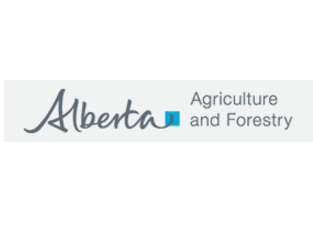Source: Alberta Agriculture and Forestry
Background
Agriculture and Forestry (AF) completed a review of the Meat Inspection Regulation (Regulation). Amendments to the Meat Inspection Regulation have focused on increasing access to locally produced meat and meat by-products, allowing for innovation in the meat inspection system, responding to industry requests, and reducing red tape. One of the amendments addresses the use of video technology for ante-mortem inspections. However, additional testing and verification of the technology are required; therefore, a time extension to this section of the Regulation was granted to conduct a pilot project. The new video ante-mortem inspection legislation will come into effect, January 31, 2022.
Previous legislation limited ante-mortem inspection to in-person assessment by a Meat and Dairy Inspection Section (MDIS) inspector or an Appointed Inspector. A 2019 survey of mobile butchers reported that 15 per cent of slaughters performed by mobile butchers in 2018 were for animals unfit for transport, typically due to a broken leg. In 2019, AF conducted a pilot study to assess the initial viability of using video technology for ante-mortem inspection of animals. Results from this pilot were supportive, but more analysis is required prior to implementation. A second pilot project is scheduled to take place in the fall of 2020.
What has changed
MDIS inspectors will be able to perform ante-mortem inspection remotely in real-time using video technology for animals that are unfit for transport, in emergency situations, or for other circumstances as approved by the Director. The carcass is required to be transported to an AF licensed abattoir within two hours to complete the slaughter and post-mortem inspection. The inspected meat products may be sold to consumers or retail, wholesale, or foodservice within Alberta.
What this means for producers
The video ante-mortem inspection option provides opportunities for producers to have an animal slaughtered on-farm resulting in meat that is inspected and can be sold.
Producers may still take advantage of the Appointed Inspector Program to have ante-mortem inspection on-farm when their animal is injured and/or unfit for transportation. Video ante-mortem inspection can only be conducted when an abattoir is able to receive animals for processing and an MDIS inspector is available.
Producers can use a mobile butcher to slaughter their animal and have the mobile butcher perform the video for ante-mortem inspection. The mobile butcher can transport the carcass to a licensed abattoir for post-mortem inspection.
Video ante-mortem inspection may have the following advantages:
- Cost savings for on-farm inspection services
- Reduced wait times for in-person ante-mortem inspections thus reducing the suffering of an animal unfit for transport
- Improved livestock welfare outcomes for semidomestic animals that are difficult to transport (e.g. bison, elk)
- Economic opportunities and decreased food waste.
Meat Inspection Regulation
Video Inspection 40.1(1)
Where an inspection is required by the legislation prior to the slaughter of an animal, an individual may slaughter that animal, despite the fact that an inspector is not present at the slaughter, if a full antemortem inspection is conducted by an inspector with the use of video technology in any of the following circumstances:
(a) in an emergency situation;
(b) where an animal is an unfit animal;
(c) in any other circumstance prescribed and published by the Director.
What this means for mobile butchers
Mobile butchers can video an animal that is unfit for transport or emergency situations prior to slaughter if the producer wants the meat to be inspected.
The mobile butcher can also transport the carcass to a licensed abattoir for the client.
What this means for abattoir operators
Abattoir operators can choose to participate in the video ante-mortem inspection process with producers and are required to inform MDIS. Arrangements between the abattoir, mobile butcher, and the producer must facilitate carcass transport to an AF licensed abattoir within two hours of slaughter and for the post-mortem inspection to take place. This allows the carcass to be processed and sold as inspected meat.
Video ante-mortem inspection may have the following advantages for abattoir operators:
- Reduced incidents of unfit for transport (e.g., non-ambulatory) animals arriving at an abattoir for slaughter.
- Reduced number of live animals that are difficult to transport (e.g., semi-domestic) and handle in an abattoir.
- Increased carcass processing opportunities.
What this means for Albertans
Albertans will have more access to inspected meat products from healthy animals. It also supports the humane treatment of animals unfit for transport (e.g. non-ambulatory).
For more information, contact: The Food Safety Branch at: af.foodsafety@gov.ab.ca






